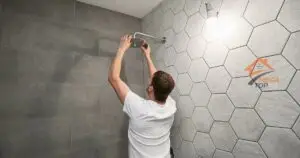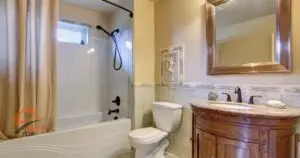Understanding Shower Remodeling
Shower remodeling involves updating or completely changing the structure, design, and functionality of an existing shower space. This process can enhance both the aesthetics and usability of your bathroom.
Common Reasons for Shower Remodeling
- Outdated Design: Many homeowners remodel their shower to update the style and create a more modern look.
- Improved Functionality: Remodeling can address issues like poor water pressure, leaks, or limited space.
- Accessibility: Convert a traditional shower into a walk-in shower to make it easier to use, especially for those with mobility issues.
- Increase Home Value: A remodeled shower can add significant value to your home, making it more appealing to buyers.
Steps Involved in a Shower Remodel
1. Planning and Design
Before beginning a remodel, it’s important to plan and design the new shower space carefully.
- Measure the Space: Take precise measurements of your current shower area to determine what changes can be made.
- Choose Materials: Select tiles, fixtures, and other materials that match your style and budget.
- Layout Design: Decide if you want to keep the existing layout or completely redesign the shower area.
2. Demolition and Removal
Once the design is finalized, the existing shower is removed to make space for the new one.
- Remove Old Fixtures: Take out the showerhead, handles, and other fixtures.
- Demolish Tile and Walls: Carefully remove old tiles, walls, and the shower base if necessary.
- Inspect Plumbing: Check for any plumbing issues that need to be addressed during the remodel.
3. Installing the New Shower
With the old shower removed, the new shower can be installed.
Installing the Shower Base
- Choose the Base: Select a shower pan or custom-built base that fits your space.
- Secure the Base: Ensure the base is properly aligned and connected to the drainage system.
- Waterproof the Area: Apply waterproofing materials to prevent water damage.
Installing Tiles and Fixtures
- Tile the Walls: Begin installing tiles on the walls, ensuring they are level and properly spaced.
- Install New Fixtures: Add the new showerhead, faucet, and other fixtures.
- Grout and Seal: Apply grout between the tiles and seal to prevent moisture from getting behind them.
Types of Shower Remodeling
1. Walk-in Shower Conversion
A walk-in shower removes the traditional bathtub and replaces it with an open, easily accessible shower area.
- Barrier-Free Access: Ideal for individuals with mobility issues as it eliminates the need to step over a tub edge.
- Customizable Design: Choose from various tile patterns, glass doors, and fixtures for a tailored look.
2. Tub-to-Shower Conversion
This involves removing a bathtub and replacing it with a shower to create more space and a modern look.
- Space-Saving: A shower can take up less space, giving your bathroom a more open feel.
- Contemporary Style: Modern showers often look sleeker and more streamlined than traditional tubs.
3. Steam Shower Installation
Converting your shower into a steam shower offers a luxurious and spa-like experience in your own home.
- Health Benefits: Steam showers provide relaxation and can help improve circulation.
- Energy Efficient: Despite the luxurious feel, steam showers use less water than traditional showers.
Preventative Maintenance Tips for a Remodeled Shower
Proper care is essential to keeping your newly remodeled shower in top condition.
Regular Cleaning
- Wipe Down Tiles: After each use, wipe down the tiles to prevent mold and mildew buildup.
- Clean Grout Lines: Regularly scrub the grout lines to maintain their appearance and prevent discoloration.
Inspect Seals
- Check for Leaks: Periodically inspect the seals around the base and fixtures to ensure they remain watertight.
- Reapply Caulk: Re-caulk areas as needed to prevent water damage over time.






